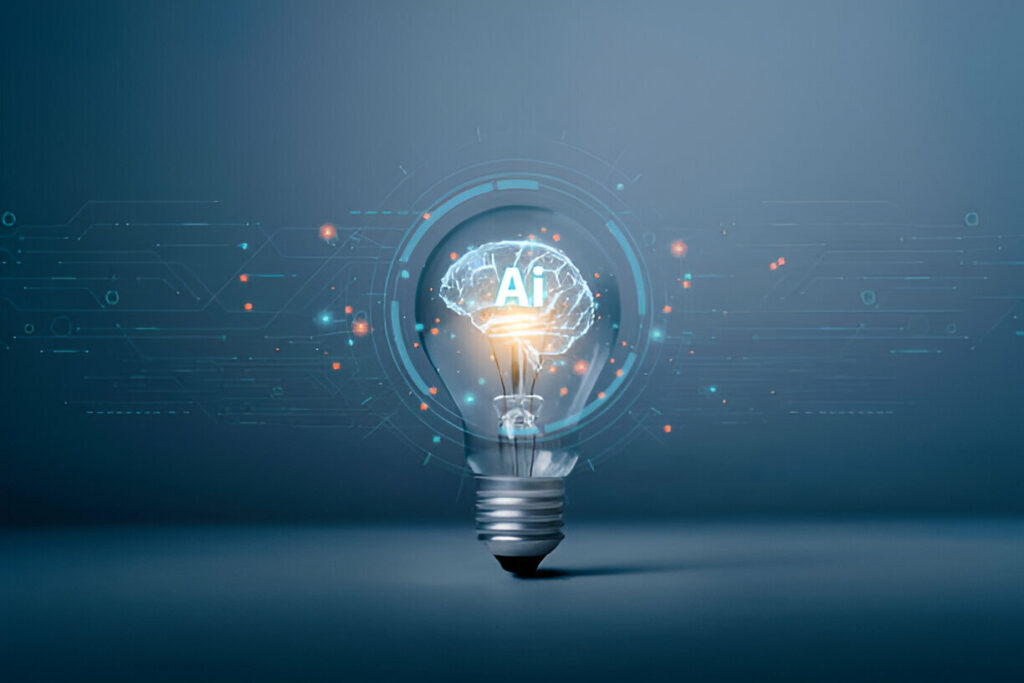Over the last couple of years, everybody has heard something about Web3 technology. But what is it exactly? How does it work? What is the catch?
Well, the internet has come a long way since it was introduced. The landscape of the web has changed dramatically from the static pages of Web 1.0 to highly interactive platforms in Web 2.0. We are now taking off into a new world — Web3 The next generation of the internet, often called Web3 is said to be a decentralized & transparent ecosystem where users are the master. However, we are here to take a deeper look into what Web3 is and why it is being called the future of the Internet. Here we go –
What is web3 technology?
The definition of Web3 varies widely, much like the results of a web search, and is influenced by the perspective of the writer. At its core, Web3 is essentially a host of centralized systems to decentralize. Contrary to Web 2.0 where we depend on tech giants to hoard and manage data, Web3 chains blockchain to make sure to distribute the rights to users.
To be brief Web 1 was “read-only”, Web 2 leapt and made the Reading and writing phase while Web3 is about “read, write & own”. The ownership piece gave power to users by owning their data and digital assets which was equivalent to next-to-nothing in prior versions of the web.
Core Features of Web3
Currently, we are using web2 technology. Both web2 and web3 technology allow its user to share content, and data online easily. But some of the amazing features that make Web3 special are the following –
Decentralization
Centralized databases of data are not on a single Web3 and depend on distributed networks to mitigate monopolization and censorship risks.
Trustless Systems
Decentralized systems by nature of blockchain protocols being the enforcer, ensuring security & transparency in Web3.
Ownership Economy
Web3, meanwhile — users own the data personal, digital identities and assets. It gives back to the user -cryptographic wallets let people directly control their interactions and transactions.
Interoperability
Web3 revolves around platforms and applications that are built to interoperate with each other resulting in a better unified user experience.
In a comparison of Web 2 vs Web3, it is evident that Web3 is designed to provide users full ownership over their content, data, and assets via blockchains.
How does web3 technology work?
As stated earlier, Web3 functions on top of a decentralized architecture. To get the full view of Web3, we have to inspect all the core components behind its innovation.

Blockchain Technology
At the heart of Web3 is a decentralized ledger on a blockchain which serves as the foundation for recording transactions and provides trust between 2 strangers without the need for an intermediary. Several Layer-1 blockchains such as Ethereum, Solana, and Polkadot are powering the majority of Web3 applications.
Smart Contracts
A smart contract is a computer program that resides on the blockchain and automatically executes according to instructions programmed by developers. They empower Web3 systems to work essentially on their own by validating contracts and agreements without using institutions.
Cryptographic Wallets
Web3 is accessed by users with a cryptographic wallet to store their digital assets and conduct transactions. Such wallets are believed to be digital identities that provide access to decentralized platforms and sites securely and privately.
Token Economies
Web3 leverages cryptocurrencies and tokens designed to drive participation, drive ecosystems to govern and transact. These could be utility tokens, governance tokens or even Non-Fungible Tokens (NFTs).
With these components, Web3 makes a decentralized internet by which users reign over their activities, data, and digital assets.
What is web3 technology used for?
For almost every industry, web 3 is serving something. Globally, many organizations, industries, and individuals are taking advantage of Web3 technology. At the moment, Web3 is shaping every sphere of life, transforming well-established systems using its innovative way.
Web3 Technology for Financial Services(DeFi)
Decentralized Finance (DeFi) platforms Ubiswap, Compound users that can trade, borrow, and lend with interest without banks or intermediaries.
Digital Ownership
The use of NFTs till now provides creators and their audiences access to genuine digital assets like art, music, and visuals online.
Decentralized Governance
CMs can also influence or participate in collective decision-making through Decentralized Autonomous Organizations (DAOs).
Video Games and Virtual Worlds
Web3 is what fuels the notion of play-to-earn games and a fully immersive metaverse where users own property in-game and participate in virtual economies.
Supply Chain Transparency
Improve traceability via blockchain-led solutions, unflinching authenticity and responsible sourcing in e.g. Agriculture Food fashion
Identity Management
Web3 wallets are secure digital identities of users with which they can use different services without data sharing.
Web3 technology is turning large sectors, starting with finance to entertainment with decentralized processes and enabling the end-user.
How Potential Is This Web3 Technology?
With so much more to handle, Web3 is set up to change over the web and well beyond:
To Empower Individuals
Web3 is putting the power back from powerful corporations to individuals. Users have data, they will own that data and get to choose how it is used along with where to use it.
Economic Disruption
Decentralized finance (DeFi) and token economies empower resilience in financial services and create global economic inclusion with Web3.
Artificial Creativity Hack
NFTs and blockchain royalties allow artists, musicians, as well content creators to sell their work directly (instead of intermediaries).
Worldwide Team Work
Internet on a decentralized level (Web3) helps collaborative innovation by using initiatives such as DAOs and open-source projects — where anyone can collaborate and gain from others.
Decentralized resilience & security
This is because decentralized systems are naturally hardened from centralized systems with less risk involved in being a single point of failure such as censorship and cyber-attacks.
Technological Convergence at an Accelerated Pace
AI, IoT integration, and other future-ready technologies can allow unprecedented automation to take hold thus automating connections and transforming sectors like health, transport, and energy.
Ecological Implications
Web3 may be able to facilitate a sustainable future, and with blockchain accounting for how these energy-efficient blockchains operate transparency plus accountability.
Web3 can revolutionize societies, economies and governance on an unprecedented scale by clearing inefficiencies and disparities in legacy systems.
Web3 Technology – Is it Just A Hype?
Web3 has left experts internationally, investors and futurists dreaming en masse. Still, the way terms like it have all the hype surrounding its ability to stick some people wonder if it’ll just be a flash in the pan.
On the plus side, Web3 is something real — decentralized finance-led infrastructure is emerging; digital ownership rights are starting to gather momentum and users have power. Applications to gaming, supply chain transparency and governance show its real-life magical properties beyond gaming.
At the same time, critics say that Web3 is in its early days and lacks proper regulation as well as scaling capacity and high entry barriers.
They also cite in the crypto and NFT markets, an atmosphere that at times is more speculative than tech as such can ever be.
Despite this in some areas of Web3 being very overhyped, its fundamentals — decentralization, transparency and user-first design principles look pretty essential to longevity. Web3 grows out of the hype into a truth of our digital future as we mature with technology and see more of what it has to offer.
Web3 Technology — Limitations & Challenges
Web3 even holds a great deal of promise, but should you address some challenges that need to be fixed for it to scale:
Scalability Issues
All blockchain networks run into scalability problems due to their inability to support a massive toll of transactions that can be processed. For example, Ethereum is one of the major platforms and you know what they say….The word is live (Sorry had to do it) During peak times, gas fees are high as it gets congested. Solutions to be sure, but there are also Ethereum 2.0 and layer-2 scaling efforts still in progress.
Crowd Control Issue For Users
Technical savvy to leverage web3 technology can be a learning pitfall for users who do not possess any technical expertise. Wallet setup, private keys and interaction with decentralized applications (dApps) can scare people, hence the widespread adoption is not all set.
Regulatory Uncertainty
Currently, the world of governance is further away from how to regulate cryptocurrencies and systems based on blockchain. Ambiguous governance and the risk of broad legislation make developers, and business users uneasy.
Energy Consumption
Most notably, some blockchain networks use a lot of energy due to their proof-of-work (PoW) consensus mechanism. Although the newer protocols, Proof-of-stake (PoS) are more energy efficient the environmental impact of Web3 is still a big problem.
Security risks
Blockchains are secure per se, but smart contracts and dApps can be often vulnerable to hackers. The financial loss associated with rug pulls phishing and protocol exploits against DeFi/NFT ecosystems is massive.
Absence of Interoperability
Interoperability is a goal of Web3 but right now on different blockchains and systems communication or integration is in the BETA stage. Without this, they will experience segmented experiences in every ecosystem.
Adoption in Enterprises & Govt
The first of which is convincing traditional industries and governments in favour of decentralized technologies. Transparency, control and integration are hard to manage; the changes are slow-moving.
What is the future of Web3?
An optimistic future of Web3 – the internet in a future that will render the current one obsolete making at least every sector manipulatable. The following is what we could see on the horizon:
Widespread Usage of Decentralized Apps (dApps)
Once it is no longer so hard for people to use Web3, we can expect to see dApp adoption explode as well. We will have increased, in industries such as finance, healthcare, education and entertainment with decentralized solutions that focus on the consumer and their control/privacy.
Merging with New Tech
Web3 would probably merge with Artificial Intelligence (AI), the Internet of Things (IoT) and VR/AR/VR among others with advanced applications being shipped. IoT devices, for instance, could communicate with one another on a secure Web3 system to execute trustless automated operations.
More NFTs, Tokenization of everything
We start NFTs beyond our art and gaming with real-world assets such as property, IP, and supply chains to verify what is real and track authenticity. Ownership and buying/selling physical assets for digital is understanding the true power of tokenization.
Decentralized Governance at Scales
DAOs (decentralised autonomies) are theoretically expanding from governance schemes for the organizations of businesses, communities or even states. DAOs may create a new type of guideline template for collaborative online projects to be fair and open.
Forts on Enhanced Privacy and Security
We will see more development in privacy-preserving blockchain tech and zero-knowledge proofs that enable the control of data by its users while meeting relevant regulations. This will further enable web3 to be more attractive in sectors for the storage of (important) data, like healthcare and finance.
Enhanced Energy Efficiency
Environmental issues: Efforts to develop environmentally sustainable consensus processes (i.e., proof-of-stake) and carbon-neutral blockchain networks will make Web3 more sustainable.
Global Economic Inclusion
Web3 allows billions of unbanked people across the globe to participate in fintech. Decentralized finance (DeFi) and Blockchain-based identity solutions will re-skill some of the unskilled.
Government and institutional roll-out
Nowadays, Governments and big institutions have started exploring blockchain as a sovereignty-enhancing tool for transparency, procedure, and fraud mitigation. Down the line, decentralized voting systems, digital identity initiatives & a blockchain-based public record might be part of the mix.
The evolution of Web3 is permeated by innovation, collaboration, and the treatment of difficult problems. It can describe how commerce will continue, trade, and regulate in a D-FUTURE world-first.
Conclusion
Web3 is not merely a tech upgrade, it is a paradigm shift. With the decentralization of control, user empowerment, and trustless systems; Web3 can transform the Internet as we know it and perhaps, our world.
The tech pioneers are already considering Web3 technology despite several issues that were found recently. While it is not the solution to all the problems with Web 2, the evolution is happening and a better outcome is yet to be received.
On this thrilling frontier, we must keep abreast and assess its implications. So, discover centralized applications and be on the edge of the next internet today!


